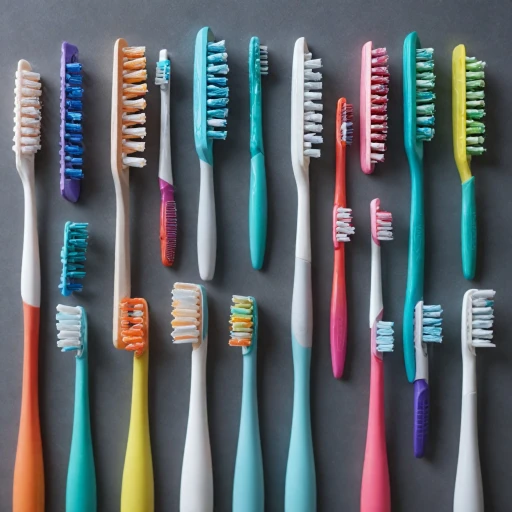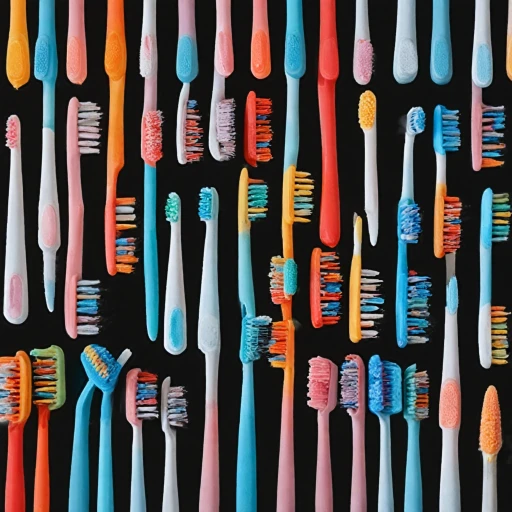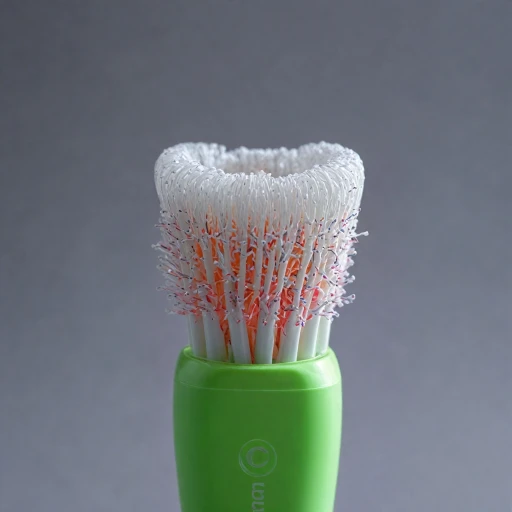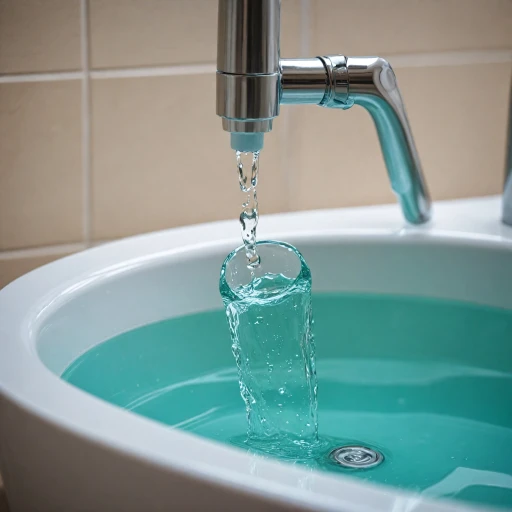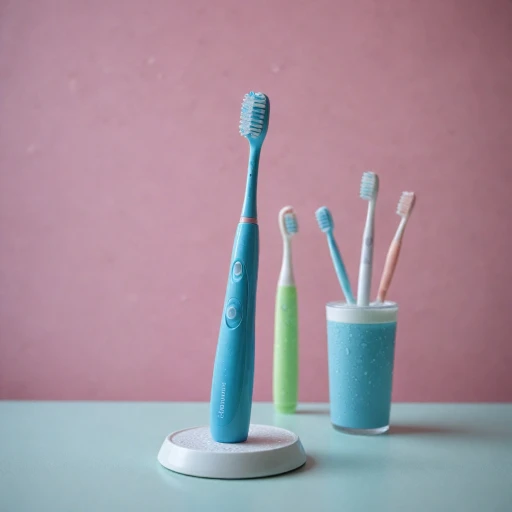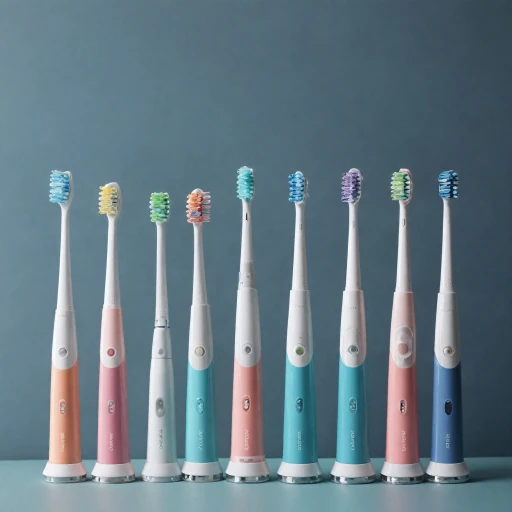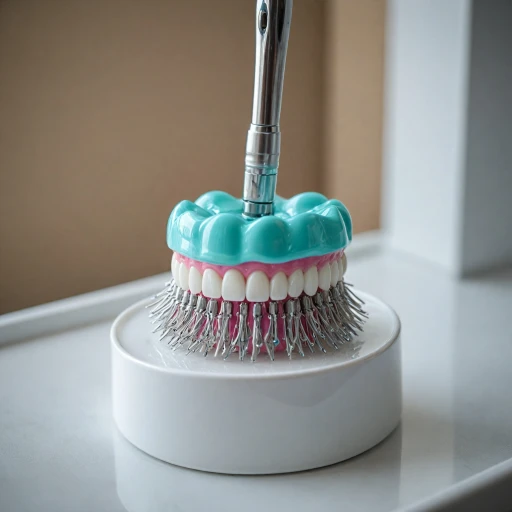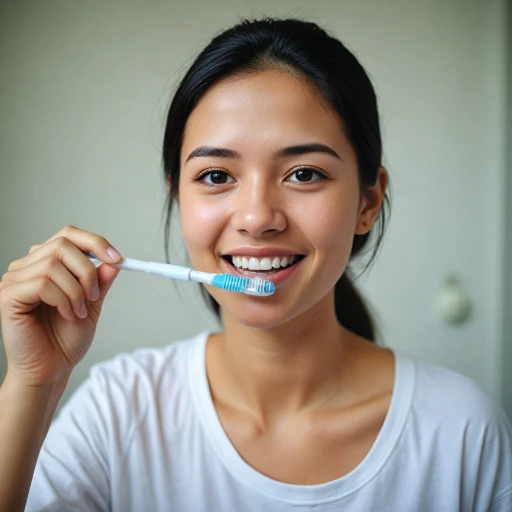
Understanding Your Electric Toothbrush
Gearing Up for Success with Electric Toothbrushes
The modern electric toothbrush is a marvel of oral care technology. Unlike its manual counterpart, the electric variant operates mainly through sonic or oscillating rotating actions that help effectively remove plaque and promote oral health. Understanding the components and functionalities of your electric toothbrush can significantly enhance your dental hygiene routine.
An electric toothbrush typically comprises a handle, a rechargeable battery, and a replaceable brush head. The interchangeability of the brush head allows users to replace it every three months, or sooner if the bristles show signs of wear, ensuring optimal clean teeth performance. The intricate design of the brush head is crafted to reach hard-to-access areas, cleaning not only the visible surfaces of teeth but also the gum line, which is crucial for maintaining healthy teeth and gums.
Most electric toothbrushes fall into two categories: sonic toothbrushes and oscillating rotating models. Sonic toothbrushes perform high-frequency movements that can exceed 30,000 strokes per minute, creating a dynamic cleaning action. Oscillating rotating brushes, on the other hand, focus on sweeping and rotating motions to remove plaque effectively. Both types significantly outperform manual toothbrushes in terms of efficiency.
The benefits of an electric toothbrush extend beyond standard brushing teeth routines. They provide a consistent brushing performance, reducing the risk of oral health issues associated with improper brushing techniques. The built-in timer features, present in many models, guide users to observe the recommended two-minute brushing duration.
For those with orthodontic appliances, tailoring your oral care practice is essential. Electric toothbrushes can be particularly beneficial, as explained in this guide for optimal oral health with braces.
To master the use of your electric toothbrush, focus on understanding these features and how they align with your specific oral care needs, setting the foundation for proper brushing techniques and an overall enhanced oral hygiene routine.
Preparing Your Electric Toothbrush for Use
Getting Ready for a Sparkling Clean
Before you start brushing teeth with your electric toothbrush, it's essential to prepare it properly. This ensures not only a thorough cleaning but also helps maintain the health of your toothbrush and, by extension, your oral health. Here’s how you can get your electric toothbrush ready for action.
Charging and Setup
Most rechargeable electric toothbrushes need to be charged before use. Place your toothbrush on its charging base and ensure it’s plugged in. A fully charged toothbrush provides optimal power, whether it's a sonic toothbrush or an oscillating rotating model. This power is crucial for removing plaque effectively.
Choosing the Right Brush Head
Selecting the appropriate brush head is vital. Different heads cater to various needs, such as sensitive gums or plaque removal. Make sure the head is securely attached to the toothbrush handle. For optimal oral hygiene, replace the brush head every three months or sooner if the bristles become frayed.
Applying Toothpaste
Apply a pea-sized amount of toothpaste to the brush head. Using a non-toxic toothpaste can enhance your oral care routine. Ensure the toothpaste is evenly distributed across the bristles for effective cleaning.
Positioning and Angle
Before turning on your toothbrush, position the brush head at a 45-degree angle to the gum line. This angle helps in cleaning the surfaces of teeth and gums efficiently, reducing the risk of plaque buildup and promoting better gum health.
By preparing your electric toothbrush correctly, you set the stage for a successful brushing session. This preparation not only aids in cleaning teeth but also prolongs the life of your toothbrush. For more insights on enhancing your oral care routine, consider exploring the benefits of an end-tuft toothbrush.
Proper Brushing Techniques
Perfecting Your Brushing Technique
Mastering the art of using an electric toothbrush requires understanding the proper brushing techniques. While electric toothbrushes are designed to make brushing teeth more efficient, the right approach ensures optimal oral health and cleanliness.
Setting the Right Position
Begin by placing the brush head at a 45-degree angle against the gum line. This angle allows the bristles to effectively remove plaque from the surfaces of the teeth and along the gum line. Gently guide the brush along the outer surfaces, inner surfaces, and chewing surfaces of each tooth.
Let the Brush Do the Work
Unlike manual toothbrushes, electric toothbrushes are built to handle the motion needed to clean teeth. Whether using sonic or oscillating rotating toothbrushes, it's important to hold the brush head lightly and let the movements of the toothbrush take care of the cleaning process.
Timing & Consistency
Most electric toothbrushes have a built-in timer to help you brush for the recommended two minutes. Divide this time equally among the four quadrants of your mouth—upper right, upper left, lower right, and lower left. Consistency in timing ensures no areas are overlooked.
Avoid Excess Pressure
It might seem counterintuitive, but applying too much pressure can harm your gums and reduce the effectiveness of cleaning. Modern electric toothbrushes are equipped with sensors to alert you when too much force is applied, which can help maintain good oral hygiene.
Electric toothbrushes are excellent tools to remove plaque and improve dental health, but the technique plays a crucial role in maximizing their benefits. Always ensure your toothbrush head is replaced every three months for the best results.
Common Mistakes to Avoid
Missteps That Impact Cleaning Efficiency
When it comes to using an electric toothbrush, ensuring it operates at optimal efficiency is crucial for maintaining oral health. Surprisingly, many users make certain mistakes that compromise their brushing efforts:
- Too Much Pressure: Applying excessive pressure can lead to gum damage and wear down tooth enamel. Electric toothbrushes are designed to do the work, so let the brush glide over the surfaces of the teeth softly.
- Incorrect Brushing Angle: Holding the brush head at a 90-degree angle to the teeth can limit its effectiveness. Instead, aim for a slight 45-degree angle, directing the bristles towards the gum line, to effectively clean teeth gums.
- Overlooking Brush Timing: It’s essential to brush teeth for the recommended two minutes. Many electric toothbrushes come with a timer to help maintain this. However, if you’re rushed, it’s easy to cut this crucial period short.
- Skipping Hard-to-Reach Areas: Rotating and oscillating heads are effective at cleaning all surfaces, yet some people neglect the inner parts of their teeth. Remember to give attention to these areas to prevent plaque buildup.
- Delayed Brush Head Replacement: Brush heads should be replaced every three months, or sooner if bristles are frayed. Using a worn head can reduce cleaning efficiency, leading to inadequate removal of plaque and bacteria.
By avoiding these common errors, you can enhance the efficiency of your electric toothbrush and ensure a thorough clean that supports excellent oral hygiene.
Enhancing Your Oral Care Routine
Maximizing the Benefits of Your Dental Routine
To make the most of your electric toothbrush, consider integrating a few additional steps into your routine to elevate your oral hygiene. An electric toothbrush can be a powerful tool in removing plaque when used correctly, but combining it with other oral care practices can further enhance your dental health.
- Flossing: While brushing surfaces teeth is vital, flossing helps clean between the teeth and along the gum line, where the toothbrush head might not reach. Make it a habit to floss daily to prevent the buildup of plaque and maintain healthy gums.
- Mouthwash: After brushing teeth, rinsing with a mouthwash can help kill bacteria lingering in the mouth, freshen your breath, and provide an additional layer of protection for your teeth and gums. Use an alcohol-free formula to prevent dryness.
- Toothpaste Choice: Opt for toothpaste that meets your specific needs, such as those designed for sensitive teeth or with extra fluoride content for added protection. Remember to follow proper brushing techniques as previously discussed to ensure all areas of the teeth are clean.
- Timing and Consistency: Aim to brush for two minutes, twice a day. Consistency is key in maintaining oral health, so ensure your brushing habits are steady.
- Regular Dental Checkups: Despite having an excellent home care routine with your electric toothbrush, do not neglect routine dental visits. Professional cleanings help reach areas you might miss and check for any dental issues that might require attention.
By integrating these practices into your routine, you not only ensure clean teeth but also safeguard your overall oral health. Your electric toothbrush alongside these steps will provide a comprehensive approach to dental care, ensuring your teeth and gums remain healthy for the long haul.
Troubleshooting and Maintenance Tips
Addressing Common Electric Toothbrush Issues
Ensuring your electric toothbrush is in optimal condition is key to maintaining good oral health. Regular maintenance can help you prevent minor problems from escalating into larger issues. Let’s dive into some troubleshooting and maintenance tips:- Recharge Responsibly: A rechargeable electric toothbrush often provides the best performance. Ensure you charge your toothbrush according to the manufacturer’s guidelines. Avoid overcharging, as it can diminish battery life over time.
- Monitor the Brush Head: The brush head plays a crucial role in cleaning your teeth. Replace it every three months to ensure effective plaque removal and avoid unwanted wear on your teeth and gums.
- Correct Angle for Cleaning: Brushing with a 45-degree angle to the surfaces of your teeth will enhance cleaning efficiency and oral hygiene. It’s a simple adjustment that can have significant benefits on oral health.
- Proper Storage: Store your toothbrush in an upright position to allow the brush head to air dry. Avoid keeping it in closed containers to prevent bacterial growth.
- Inspect for Wear and Tear: Regularly check the toothbrush handle and head for any signs of damage or wear. Address any visible issues promptly to maintain the effectiveness of brushing.

